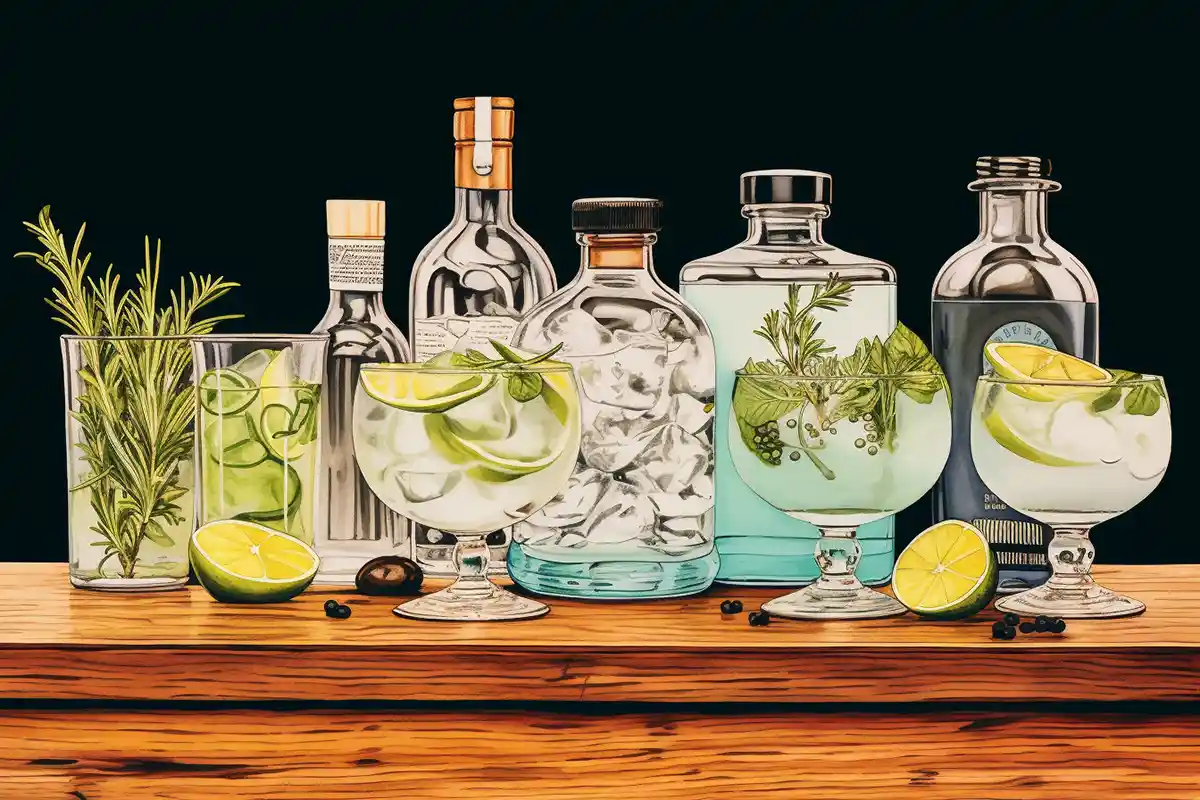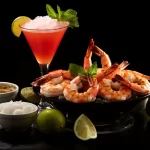Explore the fascinating world of gins with our comprehensive guide. Learn about various types and flavors of gins, along with expert insights and first-hand experiences.
Introduction
Welcome to the ultimate guide to exploring gins, where we delve into the diverse and delightful world of this iconic spirit. Gins have a rich history, and their popularity has surged in recent years as mixologists and consumers alike have developed a greater appreciation for their complex flavors and versatility in cocktails. In this guide, we will take you on a journey through the various types of gins, their unique flavors, and the best ways to enjoy them. Whether you’re a seasoned gin enthusiast or a curious newcomer, this guide is sure to provide valuable insights and valuable information.
Exploring Gins: A Brief Overview
Before we dive into the different types and flavors of gins, let’s start with a brief overview of what gin actually is. At its core, gin is a distilled spirit that derives its predominant flavor from juniper berries and various botanicals. The distillation process allows for a wide range of botanicals to be used, resulting in a plethora of gin variations with distinct tastes and aromas.
Gin is one of the most versatile spirits in the world, making it a staple in countless classic and contemporary cocktails. From the iconic Gin and Tonic to the sophisticated Martini, gin’s popularity continues to soar among cocktail enthusiasts and bartenders worldwide.
A Historical Journey: The Origins of Gin
Gin’s origin can be traced back to the 17th century in the Netherlands, where it was initially known as “jenever.” The British later adopted this juniper-infused spirit and made it their own, leading to the evolution of modern-day gin. Over the centuries, gin has undergone significant transformations, from its medicinal use to becoming a beloved social beverage. Today, it has become a symbol of craftmanship and artistry in the world of spirits.
Types of Gins: From London Dry to Old Tom
1. London Dry Gin
London Dry Gin is one of the most popular and widely recognized types of gin. Contrary to its name, it can be produced anywhere in the world and is characterized by its dry and juniper-forward flavor profile. It is often a go-to choice for classic cocktails due to its versatility and ability to blend well with other ingredients.
2. Plymouth Gin
Plymouth Gin hails from the historic naval city of Plymouth in England. This gin variety has a slightly earthier and sweeter taste compared to London Dry Gin. It features a unique blend of botanicals, including angelica root and orris root, giving it a distinct flavor profile.
3. Old Tom Gin
Old Tom Gin is a bridge between the historical Dutch genever and modern London Dry Gin. It is known for its sweeter profile, making it a favorite among cocktail enthusiasts who prefer a more approachable gin. This type of gin has experienced a resurgence in recent years, contributing to the revival of classic cocktails.
4. Genever (Dutch Gin)
Genever, also known as Dutch Gin, is the precursor to modern gin. It has a maltier and more pronounced flavor, reflecting its traditional production methods. Genever is often enjoyed neat or on the rocks, allowing its complex taste to shine.
Exploring Gin Flavors: A Symphony of Botanicals
Gin’s captivating flavors arise from the botanicals used during the distillation process. Each gin brand employs a unique combination of botanicals, leading to a diverse range of flavor profiles. Let’s explore some common botanicals found in gin:
– Juniper Berries
Juniper berries are the soul of gin, providing its signature piney and resinous taste. Without juniper, a spirit cannot legally be considered gin.
– Citrus Peel
Citrus peels, such as lemon, lime, and orange, infuse gins with refreshing and zesty notes, adding brightness to cocktails.
– Coriander Seeds
Coriander seeds impart citrusy, spicy, and slightly peppery undertones to gin, enhancing its complexity.
– Angelica Root
Angelica root contributes earthy and herbal flavors, promoting balance within the botanical medley.
– Orris Root
Orris root brings floral and violet-like aromas to gin, making it an essential component of many premium gins.
– Cassia Bark
Cassia bark, similar to cinnamon, contributes warmth and spiciness to the overall flavor profile.
Crafting the Perfect Gin and Tonic
The Gin and Tonic is arguably one of the most celebrated gin-based cocktails, appreciated for its simplicity and refreshing taste. Crafting the perfect Gin and Tonic involves a few key considerations:
– Selecting the Right Gin
The first step to a remarkable Gin and Tonic is choosing the right gin. Depending on personal preferences, you can opt for a London Dry Gin for a classic taste or experiment with Old Tom Gin for a sweeter twist.
– Pairing with the Ideal Tonic Water
The choice of tonic water is crucial in elevating your Gin and Tonic experience. Look for a high-quality tonic water with balanced bitterness and natural quinine.
– Adding Garnishes
Garnishes play a vital role in enhancing the drink’s visual appeal and flavor complexity. Common garnishes include lime wedges, cucumber slices, and fresh herbs like rosemary or basil.
Cocktail Creations: Beyond the Gin and Tonic
While the Gin and Tonic is an all-time favorite, there are numerous other gin-based cocktails waiting to be explored. Let’s take a look at some delightful concoctions:
– The Classic Martini
The Martini is a timeless cocktail that epitomizes elegance and sophistication. Made with gin and vermouth, it offers a perfect blend of strength and subtlety.
– The Negroni
The Negroni is a vibrant and bold cocktail comprising equal parts gin, Campari, and sweet vermouth. Its striking crimson color and bitter-sweet flavor make it a beloved choice among cocktail enthusiasts.
– The Southside
The Southside is a refreshing cocktail featuring gin, fresh mint, simple syrup, and lime juice. It’s a great choice for warm summer days.
– The Aviation
The Aviation is a delicate and floral cocktail made with gin, maraschino liqueur, crème de violette, and lemon juice. Its pale purple hue adds a touch of elegance.
FAQs: Answering Your Burning Questions About Gin
- What’s the best way to store gin?
- Gin should be stored in a cool, dark place away from direct sunlight and extreme temperatures. Ensure the bottle is tightly sealed to prevent oxidation.
- Is gin gluten-free?
- Yes, gin is typically gluten-free as it is distilled from grains, and gluten proteins do not pass through the distillation process.
- What’s the difference between gin and vodka?
- While both are clear spirits, the key difference lies in their flavor profiles. Gin is infused with botanicals, while vodka is typically a neutral spirit without added flavorings.
- What’s the ideal ratio for a Gin and Tonic?
- The standard ratio for a Gin and Tonic is 1 part gin to 3 parts tonic water, but feel free to adjust it based on personal preference.
- Can I age gin like whiskey?
- Aging gin is possible, but it’s a rare practice. Barrel aging can alter the gin’s flavor, adding woody and caramel notes.
- What’s the best way to appreciate the flavor of gin?
- Enjoy gin neat or on the rocks to savor its full range of flavors. For a more adventurous experience, try it in classic cocktails.
Conclusion
Exploring Gins: A Guide to Types and Flavors has taken us on a captivating journey through the world of gin. From its fascinating history to the myriad of botanicals that create its diverse flavors, gin remains an iconic and beloved spirit. Whether you’re sipping a classic Gin and Tonic or crafting an intricate cocktail, gin offers an endless array of possibilities to please your palate.
So, raise your glass and toast to the timeless spirit that is gin, and may your adventures in exploring its types and flavors be as delightful as the liquid in your glass.



